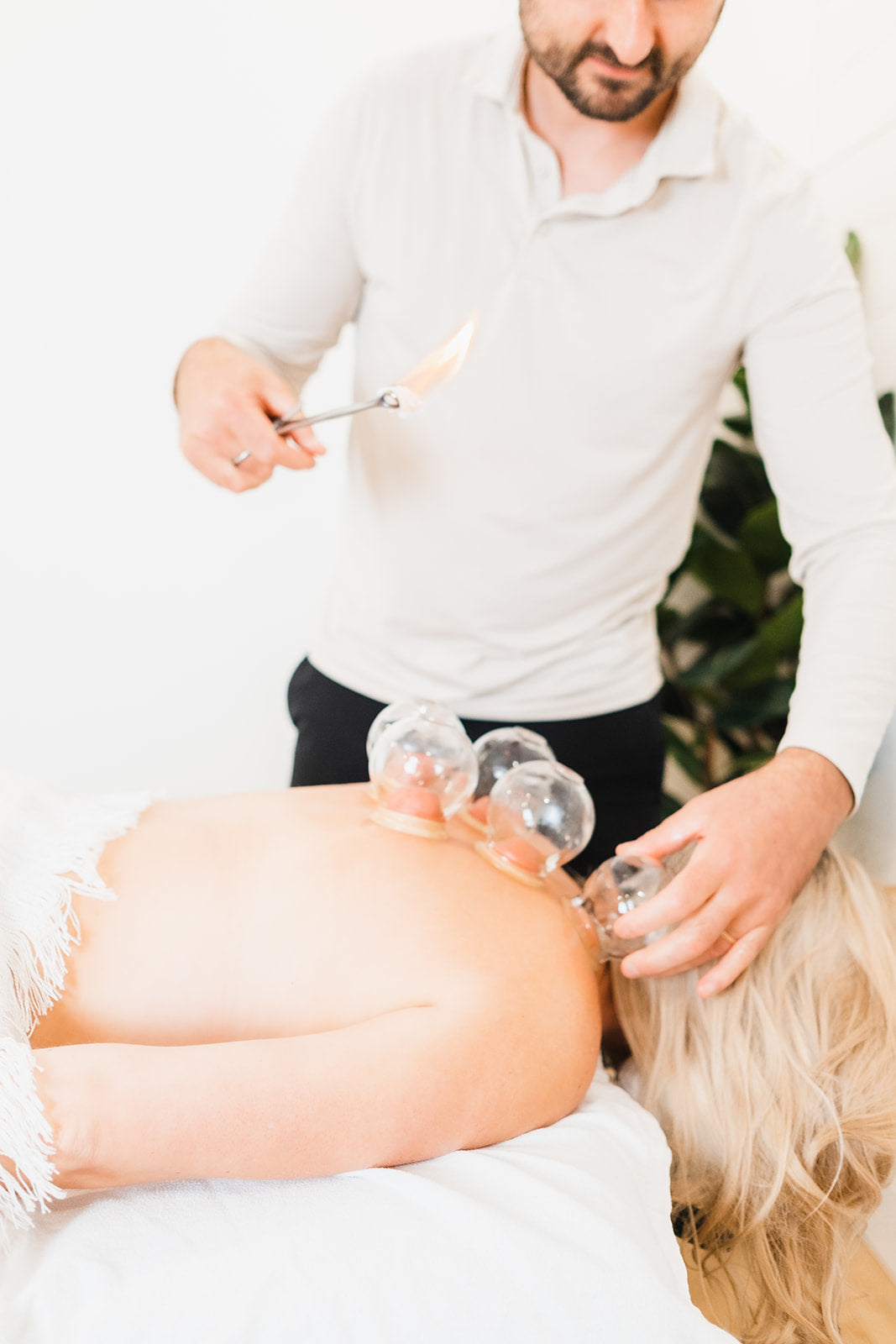
CUPPING GANDER NEWFOUNDLAND
UNDERSTANDING CUPPING
Cupping is a therapeutic technique, employed to extract toxins from your body's muscle tissues. This is achieved by creating a suction effect using specially-crafted cups, leading to enhanced blood flow and improved lymphatic system function. The outcome? Pain relief and improved mobility in muscles.
THE BENEFITS OF CUPPING
Cupping helps in:
- Reducing inflammation
- Improving blood circulation
- Reducing muscle tension or stress
- Loosening hard, stiff muscles
- Relieving pain
- Boosting immunity
- Supporting better movement and increased range of motion
- Anti-aging
WHO CAN BENEFIT FROM IT?
Cupping serves both therapeutic and treatment purposes. Generally, anyone committed to their overall health and wellbeing can benefit from this practice. Those conscious about providing care and recovery to their muscles often utilize it as a wellness therapy. It is noteworthy that many people have reported similar benefits between cupping and traditional massage therapy, particularly regarding pain and muscle tightness relief. For others, cupping provides an alternate route to alleviate pain or treat specific medical conditions. In recent years, cupping has emerged as a popular method for cosmetic enhancement and minimizing signs of aging on the skin, particularly through facial cupping.
Covered by most insurance No Dr referral needed We direct-bill insurances
OUR DOCTOR OF TRADITIONAL CHINESE MEDICINE
-

Owner & Therapist
DR. ALLISON MALONEY
Registered Acupuncturist, Herbalist, Doctor of Traditional Chinese Medicine, Yoga Instructor
FAQs
What does cupping therapy actually do?
Cupping therapy is an ancient alternative medicine form where a therapist applies special cups to your skin for a few minutes to create suction. It serves various purposes, including helping with pain, inflammation, blood flow, relaxation, and well-being, as well as functioning as a type of deep-tissue massage.
What are the benefits of cupping therapy?
Cupping therapy is believed to serve multiple purposes. It is often used to drain excess fluids and toxins, alleviate adhesions, rejuvenate connective tissue, increase skin and muscle blood flow, stimulate the peripheral nervous system, reduce pain, control high blood pressure, and modulate the immune system.
Are there any people who should avoid cupping therapy?
Yes, indeed. While cupping therapy is generally considered safe, there are certain conditions that may necessitate adjustments in the treatment approach. Individuals with a history of heart, liver, or kidney conditions, or those who have a pacemaker should discuss this with their practitioner prior to treatment. Additionally, people with blood disorders such as anemia or hemophilia, as well as those diagnosed with heart disease or on blood thinners, should also notify their practitioner to allow for necessary adaptations to the therapy plan.
Why shouldn't I take a shower immediately after cupping?
Following a cupping session, your skin becomes sensitive, and your pores open up. This state increases susceptibility to infections and can affect body temperature regulation. Therefore, it is recommended to avoid immersing your skin in water for a significant period after the therapy.
Are there any particular actions to avoid post-cupping?
In the 4-6 hours following a cupping session, it is advised to stay clear of caffeine, alcohol, sugary drinks and food, dairy, and processed meats. These substances can slow down the body's recovery post-treatment. Avoid hot showers, saunas, hot tubs, intense exercise, strong air conditioning, and cold and windy conditions.
What happens to the toxins in the body after cupping?
Cupping allows for muscle tissue expansion, paving the way for toxins to drain from your cells. When a therapist manually moves things around, toxins are pushed from these cells into the lymphatic system for expulsion.
What do the dark marks from cupping signify?
The absence of marks or the presence of light pink marks could indicate insufficient blood flow to the area. Darker spots may signify toxin accumulation, which the cups are helping to eliminate from your system.
What does a dark purple cupping mark indicate?
Cupping marks that are black, deep purple, or blue often suggest blood stagnation. This indicates that an injury or illness has been in that area for a long duration and the body hasn't fully cleared the stagnation.
Can cupping help to eliminate muscle knots?
Yes, cupping is frequently employed to ease pain, reduce deep muscle and connective tissue scar tissue, alleviate swelling, and eliminate muscle knots. Cupping aids in toxin removal by drawing them into the skin, where they are easier to expel.
Is cupping useful for weight loss?
Although cupping alone cannot ensure weight loss, it can facilitate it. It can also address other issues like muscle tightness, headaches, and pain. However, it's important to understand that cupping isn't universally suitable.
How long should I wait to shower after cupping?
It's generally recommended to wait at least three hours after a cupping session before showering with warm water.
How often should I have cupping therapy?
The frequency of cupping therapy depends on individual needs. Most people opt for weekly sessions. However, those seeking pain relief may require more frequent sessions, perhaps two to three times a week.
Cupping is often used alongside acupuncture for more immediate effects.

